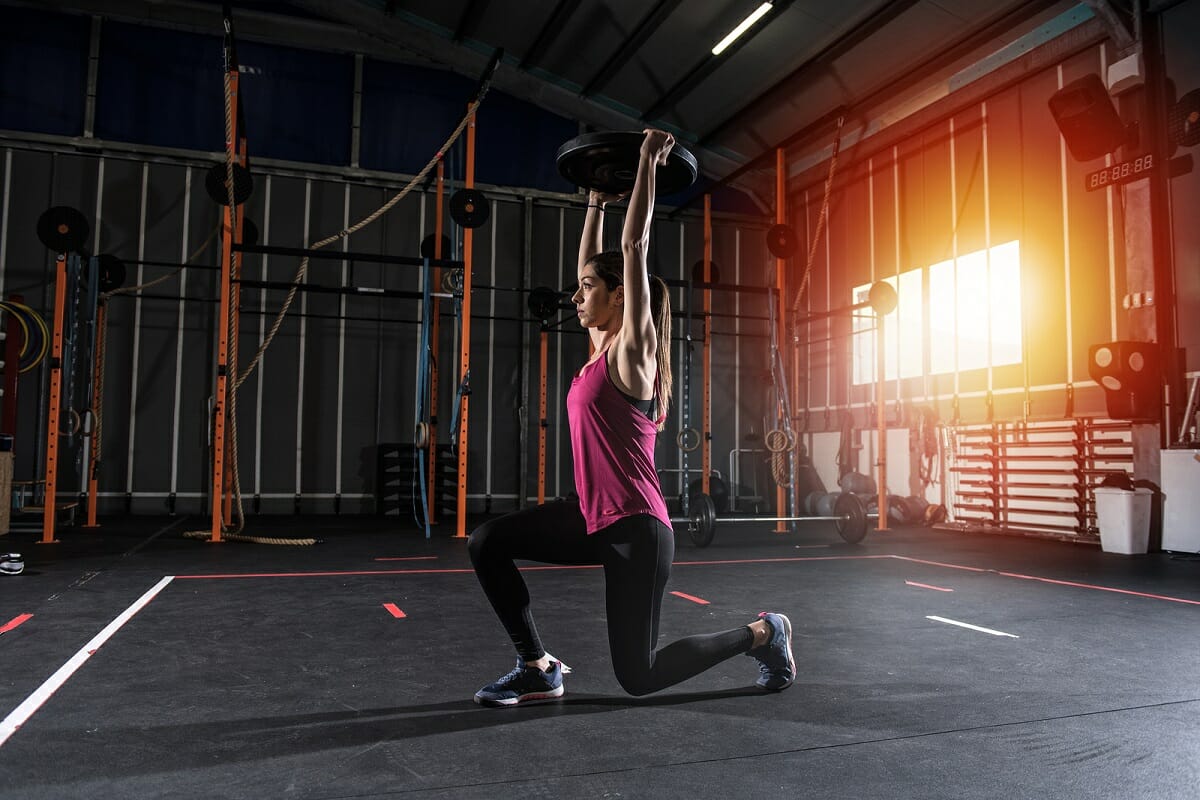“In sport, mental imagery is used primarily to help you get the best out of yourself in training and competition. The developing athletes who make the fastest progress and those who ultimately become their best make extensive use of mental imagery. They use it daily as a means of directing what will happen in training, and as a way of pre-experiencing their best competition performances.” – Terry Orlick
Sounds cool to imagine our pre-experience within training and competition, right?
So, why don’t we use this mental imagery tactic for our workouts?
Here’s what Arnold Schwarzenegger said about the mental side of things when it came to training:
“Bodybuilding is much like any other sport. To be successful, you must dedicate yourself 100% to your training, diet, and mental approach.”
In his book, Total Recall, he talks about a form of mental imagery that he used, and he said his calves were a weak point for him and what he did was wear shorts every day to A) expose his weak points and B) mentally cue his brain that he needed to work on them
This mental imagery phenomenon is more powerful than people think. High-level athletes use it all the time to prepare for top-level performances. A mental image of themselves performing great and winning goes a long way.
Priming your mind means that every day when you wake up, you should look at your goals, your vision, and your big why and get emotionally attached to them.
During your workouts, you should always have a mental image of yourself having a great workout and this can be done through mental imagery.
To further support this mental imagery concept, here’s one of our favorite sayings by John Assaraf:
“Are you priming your mind daily? Priming your mind means that every day when you wake up, you should look at your goals, your vision, and your big why and get emotionally attached to them. What you want to do is play a mental movie of seeing yourself achieving the goal that you want to achieve.”
Now that’s powerful!
Can you see yourself driving to the gym playing a mental movie of yourself crushing your workout?
Try it to see your goal more clearly.
Why?
Because when you see it in your mind, that’s when you’ll project it out into the real world.
That’s when your behavior starts to change and become your new reality.
Let’s dive into some scientific data on mental imagery and it enhancing your training.
Try it to see your goal more clearly.
Why?
Because when you see it in your mind, that’s when you’ll project it out into the real world.
That’s when your behavior starts to change and become your new reality.
Let’s dive into some scientific data on mental imagery and it enhancing your training.

Maximizing Strength and Muscle Growth Through Mental Imagery
There’s both peer-reviewed scientific data and anecdotal evidence supporting that you could maximize strength training using Mental Imagery.
There’s anecdotal evidence that individuals making use of mental imagery have found increased confidence during their resistance training workouts.
But, at present, the exact mechanisms by which mental imagery works remain unclear, although recent work using brain imaging techniques has advanced our knowledge by confirming that the right hemisphere of the brain is the primary imagery center.
If you put this into practice, prior to training, what if you played a mental movie of yourself hitting a new squat personal best?
Do you think this would help with mental focus during the actual squat attempt?
We think so and it’s worth experimenting with and seeing if it works for you.
In a review by Richert et al. the researchers explain that imagery can be performed from either an internal or external perspective (1). They clarify that internal imagery is where the individual visualizes an image from the first-person point of view while the external imagery is where the point of view is from a third person.
The researchers explain that mental imagery has been found to be most effective when the images are clear and include specific details. They note that using information from various senses can help to improve the clarity of the images and increase the effects of using the imagery.
They also note that controllability is also a key factor in using imagery successfully. The correct use of imagery is to visualize successful outcomes and avoid considering or imagining unsuccessful outcomes.
A new study that was just published by Brad Schoenfeld and Colleague’s investigated internally vs external focus during resistance training on muscular adaptations (2).
They took 27 male subjects and split them into 2 groups, an internal focus group where they focused on the mind-muscle connection and had subjects “Squeeze” the muscle during reps and an external focus group where they had subjects focus on visualizing the outcome of the performance by telling them to “Lift the Weight Up.”
The results showed that the internal focus group led to more muscle thickness on the elbow flexors. So, this new study lends support to internal focus may be better for hypertrophy and external focus may be better for strength gains.

Staying on the topic of internal and external mental imagery, you might be asking how in the world does one perform an internal or external perspective. A wise tool to incorporate is “Imagery Scripts.”
Imagery scripts are sequential descriptions of movement including keywords and phrases. The reviewers suggest that an imagery script for a weightlifting movement, such as a deadlift, is organized around four phases (3):
- a pre-workout phase
- a pre-lift phase
- during the lift-phase
- a post-lift phase.
For example, on the deadlift, the pre-workout phase would be the athlete mentally preparing themselves for the energy level they will require.
During the pre-lift phase, the athlete would build on the momentum of the pre-workout phase by visualizing more specific components to the lift, such as setting up in position to deadlift and not rushing the lift.
Use warm-up sets to visualize (external cues) the working set
During the lift-phase, it’s just a continuation of the pre-lift phase.
Finally, the post-lift phase is an opportunity to reinforce a successful lift. In more modern terms, to nail that damn deadlift.
Moreover, what’s cool about mental imagery training is the visualization aspect of it all. Visualizing yourself doing the actual movement prior to executing it, imagining the specific muscle contracting, and paying attention to how your body feels and moves. Buck and colleagues showed that there was a meaningful increase in a 3 Rep Max front squat after just 3 days of incorporating a structured mental imagery training program (4).
Another crucial study that uses combat athletes as subjects showed that two different types of mental training were each effective (and an additive) for improving gains in strength and athletic performance during a standard resistance training program.
One type of mental training involved mental imagery (visualization) of the exercises, in-between sets. This has previously been shown to enhance performance in many previous studies.
The other type of training involved motivational self-talk, in which the athlete selected and repeated specific statements intended to increase their self-confidence.
The gains in strength in this group of athletes were strongly associated with self-efficacy, which is a psychological quality known to be affected by mental training methods (5).

In a Nutshell, Your Mentality Becomes Your Reality
Mental imagery can be used as a way of improving your overall workouts.
The correct use of mental imagery is to visualize successful outcomes and avoid considering or imagining unsuccessful outcomes (6).
Remember these four key points of mental imagery:
- Play a mental movie of seeing yourself achieving the goal that you want to achieve within your workout…meaning have such a clear vision of your workout and the result you desire
- Use mental imagery next time you exercise through the four phases within imagery scripts before, during, and after a lift
- Mental preparation is critical to sport success and involves efforts to mentally prepare for both competitions and practices and in this context your workouts
- Your mentality becomes your reality…The minute you go into your workout and think negative, become scared, get distracted, or doubt yourself, we promise you will have a sub-optimal workout
Practical Applications
After going through a lot of the research on this topic it’s hard to give a firm yes or no answer with “does mental imagery work within training?”
What we do know is, your mind is more powerful than you can ever imagine.
The research is pretty promising on using mental imagery to enhance your training.
Here are some practical applications to try out mental imagery to enhance your training to see if it helps you:
- Use warm-up sets to visualize (external cues) the working set
- Before your big lift exercises try mentally visualizing (external cues) yourself executing the lifts
- Give yourself some self-talks or pep talks to get you psyched up before your workouts or a big lift
- During single joint exercises like bicep curls or leg extensions, focus on the mind-muscle connection and pretend someone is in your ear telling you to “Squeeze” the contraction
- Take notes in your training journal how you felt mentally during that training session. Rate yourself a 1-5 (1 being mentally drained and a 5 is in the zone)
- Use video to record yourself to see your external cues before a lift, critique it, then apply the learnings in the next training session
- Experiment with the 4 phases of imagery scripts
- Try new forms of mental imagery, track and measure it, and see if its working or not
No comments:
Post a Comment